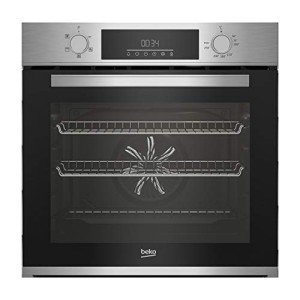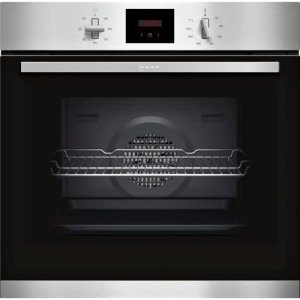Is Technology Making Single Built-In Ovens Better Or Worse?
페이지 정보

본문

The Rise of Single Built-In Ovens: A Comprehensive Guide
In today's contemporary kitchen areas, the choice of devices plays a critical role in integrating functionality with visual appeal. Among these appliances, the single built-in oven has become a preferred among homeowners and chefs alike. This article dives into the functions, benefits, and considerations connected with single built-in ovens while attending to frequently asked questions (FAQs).
Understanding Single Built-In Ovens
Single built-in ovens are designed to fit perfectly within kitchen cabinetry. Unlike freestanding ovens, which stand alone and may occupy more area, built-in ovens are installed straight into the kitchen infrastructure, offering a smooth, integrated appearance. They can run individually or in conjunction with a cooktop, taking full advantage of the efficiency and styles of contemporary cooking areas.

Functions of Single Built-In Ovens
Single built-in ovens come geared up with a variety of innovative functions that enhance their performance and user experience. Some common functions include:
| Feature | Description |
|---|---|
| Self-Cleaning | A function that cleans the oven interior at high temperature levels, reducing the requirement for manual scrubbing. |
| Convection Cooking | A fan flows hot air, making sure even cooking and browning of food. |
| Smart Technology | Wi-Fi connectivity that enables control over the oven from smartphones, along with recipe guidance and tracking. |
| Several Cooking Modes | Options such as baking, broiling, roasting, and grilling to match various cooking requirements. |
| Touch Controls | User-friendly touch interfaces that enable for easy temperature and timer modifications. |
| Sleek Design | Visual surfaces like stainless steel, black, and custom-made panel-ready choices for a personalized kitchen look. |
Benefits of Single Built-In Ovens
- Space-Saving Design: Built-in ovens occupy less floor area, making them perfect for compact kitchens or for house owners wishing to optimize kitchen layouts.
- Improved Aesthetics: Their integrated design adds to a structured appearance, allowing for a more unified look with kitchen cabinetry.
- Enhanced Functionality: With innovative functions like accurate temperature level controls and several cooking modes, built-in ovens offer adaptability for numerous culinary jobs.
- Increased Value: Homes equipped with contemporary, high-quality devices like built-in ovens tend to have higher market price.
- Modification: Built-in ovens provide customizable options, allowing homeowners to choose designs that match their kitchen style perfectly.
Considerations When Choosing a Single Built-In Oven
When selecting a single built-in oven, numerous aspects need to be considered to guarantee that it fulfills cooking requirements and fits the kitchen design. Below are key factors to consider:
Size and Capacity:
- Standard measurements usually range from 24 inches to 30 inches large.
- Think about the internal capacity, measured in cubic feet, depending upon the cooking needs of the family.
Fuel Type:
- Built-in ovens can utilize gas, electric, or dual-fuel choices.
- Electric ovens are known for consistency, while gas ovens use quicker heat adjustments.
Installation:
- Proper installation is important for safety and functionality. Professional installation is advised, especially for gas ovens.
Budget plan:
- Prices can differ widely based on brand name, features, and extra innovation. Determine a budget before shopping.
Energy Efficiency:
- Look for ovens with energy scores to ensure lessened electrical energy use over time.
Brand name and Warranty:
- Choose trustworthy brand names understood for durability and customer service. Likewise, consider service warranty alternatives.
FAQ About Single Built-In Ovens
1. How does a single built-in oven vary from a double built-in oven?A single built-in
oven has one cooking compartment, while a double built-in oven includes 2 separate compartments, permitting for simultaneous cooking at different temperatures. 2. Can built-in ovens be placed under the countertop?Typically, built-in ovens are designed to fit within cabinetry
. Nevertheless, it is essential to guarantee proper ventilation and adherence to installation guidelines for security. 3. How do I clean up a self-cleaning single built-in oven?To trigger a self-cleaning cycle, remove
racks and other items, then choose the cleansing function according to the
maker's guidelines. After the cycle, allow the oven to cool before wiping away ash residue. 4. Is it worth purchasing a clever single built-in oven?Smart ovens provide flexibility, convenience, www.Ovensandhobs.uk and combination with other clever home devices.
They can be particularly advantageous for tech-savvy users who enjoy
accuracy cooking and remote tracking. 5. What need to I do if my built-in oven is not heating properly?If the oven fails to heat, check for power problems, guarantee the settings are appropriate, and validate that the heating aspect is working.
If problems continue, consult a professional specialist. Single built-in ovens represent a mix of efficiency, design, and technological improvement in modern kitchen styles. Whether in a compact space or a vast premium kitchen, these ovens offer house owners with the
tools essential to explore their culinary imagination while keeping an organized and sophisticated visual. As customers continue to purchase their homes, comprehending the ins and outs of built-in ovens can lead to informed decisions that enhance both cooking experiences and home worth. As technology develops, the future of single built-in ovens promises even more exciting developments for cooking lovers.
- 이전글1Win Kazinosu Azərbaycanda: Populyar Onlayn Oyun Platforması 25.06.16
- 다음글Buy Driver's License With Privileges Online Strategies From The Top In The Industry 25.06.16
댓글목록
등록된 댓글이 없습니다.
![정국토건[주]](http://jkst.co.kr/img/ci.svg)

![정국토건[주]](http://jkst.co.kr/img/ci_bt.svg)